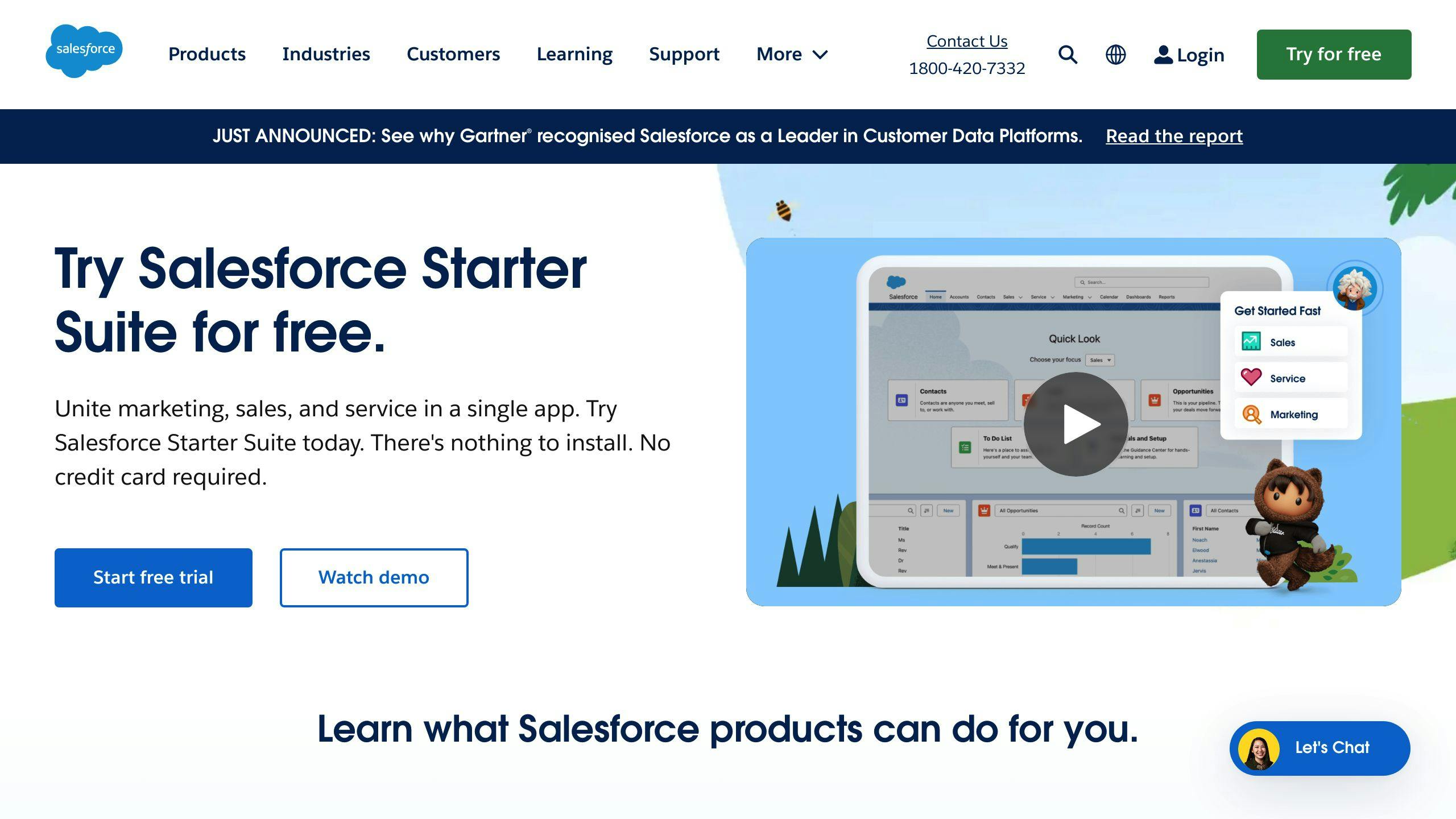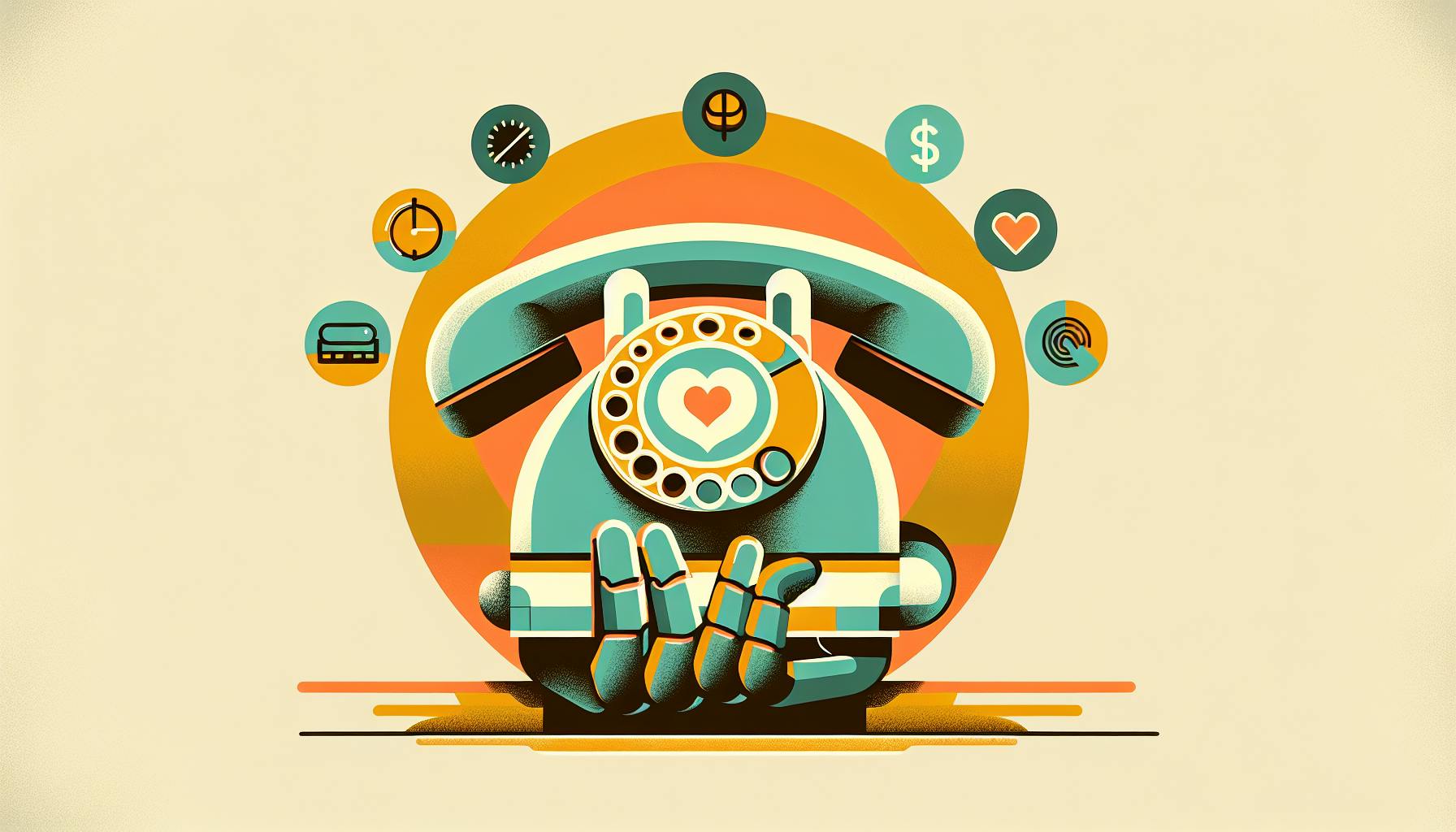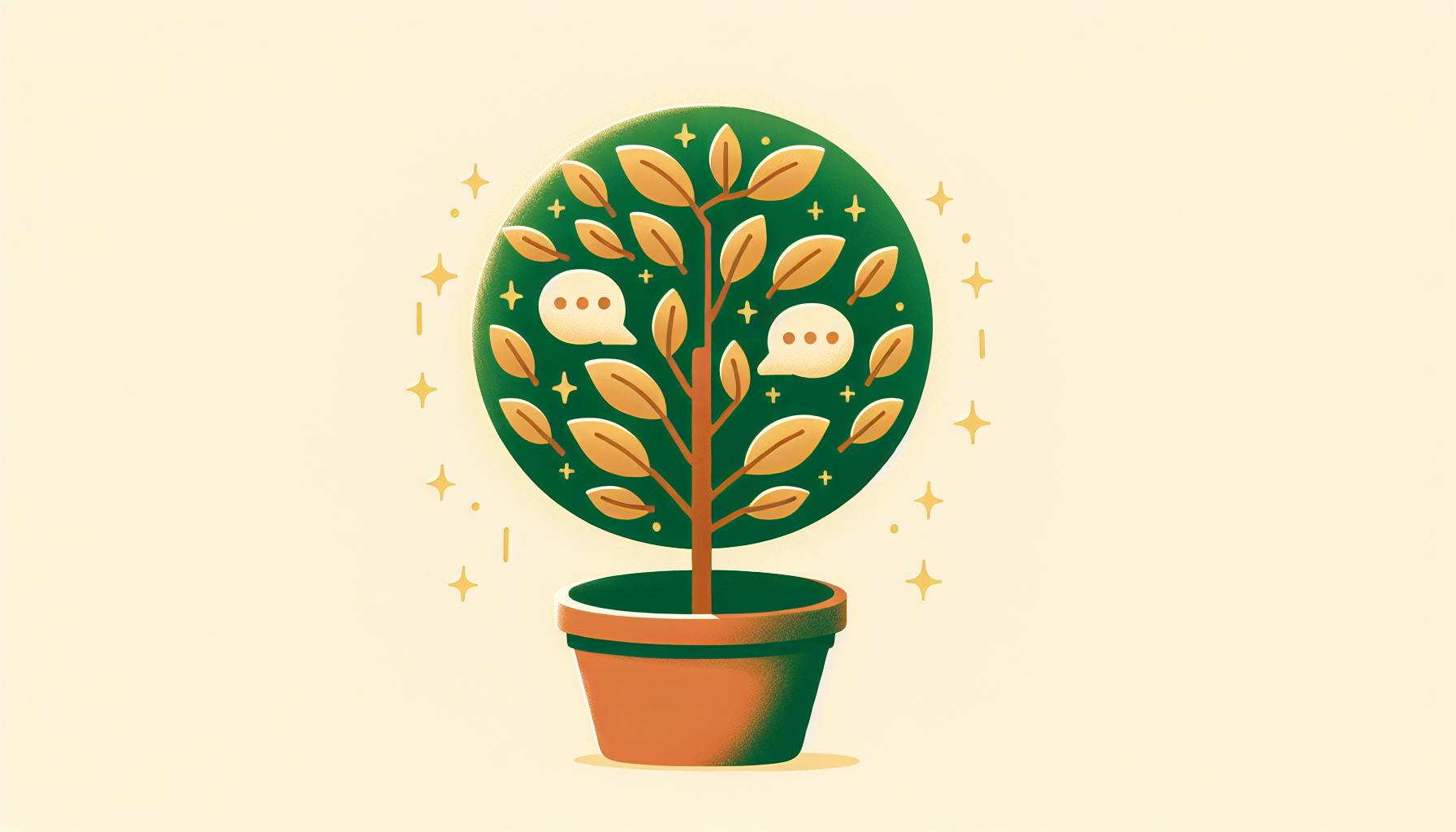In the fast-paced world of SaaS (Software as a Service), exceptional IT customer service isn't just a nice-to-have; it's essential for customer satisfaction, retention, and growth. This article dives into the best practices for SaaS IT customer service, focusing on strategies that ensure your support team is not just reactive but proactive, capable of scaling with your business, and tightly integrated with your product development efforts. Here are the key takeaways:
- Scale Your Support Team as your company grows to maintain high-quality service.
- Foster Close Collaboration between your support team and product developers to quickly resolve issues.
- Personalize Customer Support using detailed customer information for more effective assistance.
- Implement Predictive Tools to identify and resolve issues before they impact users.
- Encourage Self-Service by creating comprehensive guides and help articles, allowing customers to find solutions independently.
By excelling in these areas, SaaS companies can significantly enhance customer loyalty, encourage positive word-of-mouth, and ultimately drive growth. Whether you're just starting out or looking to improve your existing customer service framework, this guide provides actionable insights for making your IT customer service a powerful asset for your SaaS business.
What is SaaS Customer Support?
SaaS customer support is all about helping customers use and benefit from software services that are accessed over the internet. This includes:
- Onboarding & Setup: Helping new users set up and start using the software.
- Technical Support: Fixing any software issues or glitches that come up.
- Training: Showing customers how to use important features to get the most out of the software.
- Community Engagement: Building spaces like forums or knowledge bases where customers can help each other.
The main aim is to make sure customers have a smooth experience and can fully use what they’ve paid for.
How SaaS Support is Unique
SaaS customer support is different from traditional software support in a few ways:
Scalability
- As more people use the service, support needs to grow too. This means having a way to help more customers as needed, using things like automated help or ways for customers to help themselves.
Integration
- Since SaaS services often need to work with other systems, support teams have to know how these connections work to solve problems.
Subscription Pricing Model
- Keeping customers happy is extra important because they pay regularly to use the service. Happy customers stick around, which means steady income for the business.
The Role of Customer Service in SaaS
Customer service is super important for SaaS companies because it helps keep customers happy, loyal, and telling their friends about the service.
Driving Satisfaction and Loyalty
Great customer support makes customers trust the company more and meets what customers expect, making them happier and more likely to stick around. Here’s how:
- Quickly fixing problems: Solving issues fast stops customers from getting upset. Studies show that 66% of people would leave a brand if the customer service is bad.
- Giving personalized help: Knowing your customers and helping them in a way that fits their needs makes your support more helpful.
- Being proactive: If you reach out first to help customers or stop problems before they start, customers see you as more helpful.
- Offering many ways to get help: Letting customers choose how they want to reach out (like email, chat, or self-help options) makes it easier for them.
- Listening and improving: When you follow up on problems and make things better, it shows customers they matter.
Happy customers tend to stay longer and support the business more because they’re satisfied and loyal.
Fueling Referrals and Growth
When customers love the service, they often tell others about it. Here’s how support helps with this:
- Turning customers into fans: Studies have found that happy customers tell more people about the brand than unhappy ones. Good support makes more happy customers.
- Making customers want to spread the word: If customers really love the service, they’ll actively tell others about it. Great support creates these strong connections.
- Finding more ways to sell: Sometimes, support talks to customers and finds out they need more than what they have. This can lead to selling more services.
By making customers happy and loyal, SaaS businesses can get more people talking about them and buying more.
Key Components of Effective SaaS Support
Let's talk about what makes a really good support team if you're selling software online. It's about having a clear plan, using the right tools, and having people who know their stuff.
Defining Your Support Philosophy
First things first, you need to figure out what you want your support team to be all about. Here’s how to start:
Establish Your Vision
- Think about what you want to achieve. Do you want happier customers? Fewer people leaving? More customers telling their friends about you? Decide on your main goals.
Define Your Values
- Decide on the big principles that guide how your team helps customers. This could be putting customers first, being open and honest, or always looking for ways to solve problems.
Set The Tone
- Decide how you want your team to talk to customers. Make sure it fits with your brand and feels right to your customers.
Map The Workflow
- Write down the steps for handling different kinds of support questions. This helps everyone know what to do and keeps things consistent.
Choosing the Right Tools
Different tools can help your team support customers. Here’s a look at some options:
| Tool | Best For | Key Features |
|---|---|---|
| Zendesk | Bigger companies or those needing more features | Help articles, forums, satisfaction surveys, data stuff |
| Freshdesk | Smaller companies, easy to use | Ticketing, help yourself portal, phone stuff |
| Help Scout | Small businesses, really user-friendly | Shared emails, automatic tasks, chat |
| Intercom | Chat support, talking right in the app | Chatbots, messages in the app, help articles |
Think about what’s easy to use, what you need it to do, how well it works with other stuff you use, and how much it costs to pick the best one.
Building a Skilled Team
Here’s how to make sure your team is top-notch:
Hire for Soft Skills
Look for people who are really good at understanding others, talking things through, solving problems, and handling emotions. You can teach them the tech stuff later.
Invest in Training
Teach them all about your product and how to be great at helping customers. Good training makes your team better.
Motivate and Retain
Pay them well, give them chances to grow, let them make decisions on how to help customers, and celebrate when they do a great job. This keeps them happy and sticking around.
With a clear plan, the right tools, and a skilled team, you can give your customers awesome support.
IT Customer Service Best Practices for SaaS
Making sure your customers get the help they need is super important for SaaS companies. This keeps them happy, coming back, and telling others about your service. Here are some straightforward ways to make your support really good.
Be Proactive, Not Just Reactive
- Keep an eye on how your service is used and find problems before they bother users
- If you see someone having trouble, reach out first with a solution
- Ask your users regularly what’s bugging them to make your product better
- Give new users a step-by-step guide to avoid common issues
- Alert your support team if someone stops using your service or might leave
Meet Customers Where They Are
- Have different ways for customers to reach out, like phone, email, chat, and help themselves
- Make it easy for users to get help without leaving your app
- Use what you know about a user to make your help more personal
- Keep users in the loop with updates when there’s a big issue
Leverage Self-Service Options
- Build a help center with answers to common questions
- Use chatbots for quick answers to simple problems
- Let chatbots gather info to make help more personal
- Chatbots can also suggest articles to help users solve their own problems
Continuously Seek Customer Feedback
- Use surveys to see how happy your customers are
- Watch social media for what people are saying about you
- Talk to users every few months to find out what could be better
- Set up a group of users to give feedback on new ideas
- Keep an eye on satisfaction through all steps - when they start, as they use your service, and when it’s time to renew
By being there for your customers in many ways and listening to what they need, SaaS companies can offer great service that keeps people using their service and telling others about it.
sbb-itb-bd9cbc6
Measuring and Improving Support
Essential Support KPIs
Key performance indicators (KPIs) are important numbers that help SaaS companies see how well their customer support is doing and find ways to make it better. Here are some key customer service KPIs to keep an eye on:
Customer Satisfaction (CSAT)
- Definition: A score that shows how happy customers are with the support they got, usually from 1 to 5.
- Benchmark: Try to get at least 90% of customers to give a score of 4 or higher.
First Contact Resolution (FCR)
- Definition: The percentage of customer questions solved the first time without needing more help.
- Benchmark: A rate of 80% or more is pretty good.
Average First Response Time
- Definition: How long it takes on average to first reply to a customer's question.
- Benchmark: Less than 1 hour is good for most businesses.
Average Resolution Time
- Definition: How long it takes on average to completely solve a customer's question.
- Benchmark: Aiming for 24-48 hours is solid.
Checking these numbers regularly helps you set goals, spot problems, and improve how things work over time.
Analyzing Data to Optimize
It's important to look at support data often to find ways to do better. Here's what to do:
Review Reports
Check out weekly and monthly reports on how many questions you get, how long it takes to solve them, CSAT scores, and other important numbers. Look for areas that aren't doing well.
Send Surveys
After solving a customer's problem, ask them how the process was, if the support person was helpful, and more.
Monitor Tools
Watch your help desk software for patterns in the questions asked, common problems, and more.
Talk to Customers
Sometimes, have calls with customers to hear directly from them about what could be better.
Talk to Agents
Listen to your support staff about what's hard for them and any ideas they have.
Identify Issues
List the main problems and things that need to get better. Decide which ones are most important.
Implement Changes
Make plans to fix the most important issues first, starting with the easiest fixes.
By always collecting data from reports, surveys, tools, and talks, you learn and make changes that help make things better and keep customers happier.
Case Studies
Salesforce

Salesforce is a big name in managing customer relationships through its software. They're really good at helping customers by:
- Offering many ways to get help: This includes phone, email, chat, and even helping yourself through guides.
- Reaching out first: They don't wait for you to have a problem; they offer help, training, and try to stop issues before they start.
- Community forums: A place where over 4 million users share tips and help each other, saving the company from having to answer every question.
- Always getting better: They ask for feedback and use it to make their service better.
Results:
- They keep 26% more customers than other similar companies.
- 90% of their customers are happy with the service.
- They save $10 million every year because their community helps itself.
HubSpot
HubSpot offers tools for marketing, sales, and customer service. They are known for:
- A big library of help articles: With over 1,000 articles, people can quickly find answers.
- Quick response: They sort out problems quickly, usually in less than 30 minutes.
- Chatbots and staff reaching out: Both automated chatbots and real people offer help to visitors and users having trouble.
- Learning a lot: Their support team knows the product inside out because they take special courses.
Results:
- They reply to questions in less than 30 minutes.
- They solve most problems on the first try.
- More than 95% of customers keep using their service.
Zendesk
Zendesk makes software to help with customer service and uses it to support their own 160,000 customers by:
- Being everywhere: They help through email, social media, chat, self-help guides, and phone.
- Knowing their customers: Their team has all the info they need to make help personal.
- Helping before you ask: They reach out to teach you how to use the software, show you new features, and check in on how you're doing.
- Always trying to do better: They regularly ask how satisfied you are to find ways to improve.
Results:
- Their customers are more than 90% happy.
- They manage to avoid over half of potential support issues with self-help options.
- They usually get back to you in less than an hour.
These companies show that with the right tools, good planning, and a team that knows what they're doing, you can make customers really happy.
Conclusion
Making sure your IT customer service is great is super important for any SaaS business that wants to keep growing and keep its users happy. By focusing on things like being able to help more users as you grow, working closely with the team that makes your product, and solving problems before they even happen, you can really stand out and do well in the long run.
Why IT Customer Service Matters
- It shows users you value them and builds trust
- It keeps users happy and makes them want to stay
- It encourages users to tell others about your service
- It directly helps your business make more money and keep going
In simple terms, if your support isn't meeting users' needs, your SaaS business won't do as well as it could.
Best Practices to Follow
To make your IT customer service the best, SaaS companies should:
- Grow your support as more users come on board
- Work closely with the folks who build your product
- Use what you know about your users to help them better
- Try to fix issues before they turn into bigger problems
- Offer ways for users to help themselves
Keeping an eye on things like how satisfied your users are, how quickly you solve their problems, and how fast you respond to them helps you know how you're doing and what you need to work on. Always asking for feedback from your users and making things better is crucial.
Focusing on Customers = Focusing on Growth
At the heart of it, a SaaS business depends on its users. Making sure they have a great experience every time they interact with your service means they'll stay happy, keep using your service, and tell others about it. By putting a lot of effort into customer service, SaaS businesses are also putting a lot of effort into growing in a sustainable way.
Having strong support that can grow with you and offers both help from real people and ways for users to figure things out on their own isn't just a nice extra—it's absolutely necessary for any SaaS business that wants to compete and grow today. The future belongs to those who really put their users first.
Related Questions
What is SaaS in customer service?
SaaS (software as a service) customer support is all about how tech companies help their customers from the moment they start thinking about buying their product to after they've bought it. It's focused on solving any problems customers might have and making sure they understand how to get the most out of the product.
How do you engage customers in SaaS?
To keep SaaS customers interested, you can:
- Share useful stuff like blog posts, ebooks, and webinars
- Make the product feel personal by using what you know about the customer
- Send messages inside the app to help guide them
- Use notifications in the app to grab their attention
- Create online forums for chatting
- Email them tips and educational info
- Ask for their opinions and feedback
What are the SaaS customer phases?
The main steps a SaaS customer goes through are:
- Acquisition: Getting new customers
- Engagement: Getting customers to use the product more
- Retention: Making sure customers keep coming back
Knowing what step a customer is at helps SaaS companies figure out how to move them to the next step.
What is the customer success team in SaaS companies?
In SaaS companies, the customer success team helps customers get what they want out of the software. They do things like:
- Help new customers get started
- Teach them how to use different parts of the product
- Answer any questions
- Keep an eye on how happy and engaged customers are
- Suggest other products that might help
- Work to keep customers happy over the long term
Their main job is to make sure customers use the software in a way that meets their business goals.


